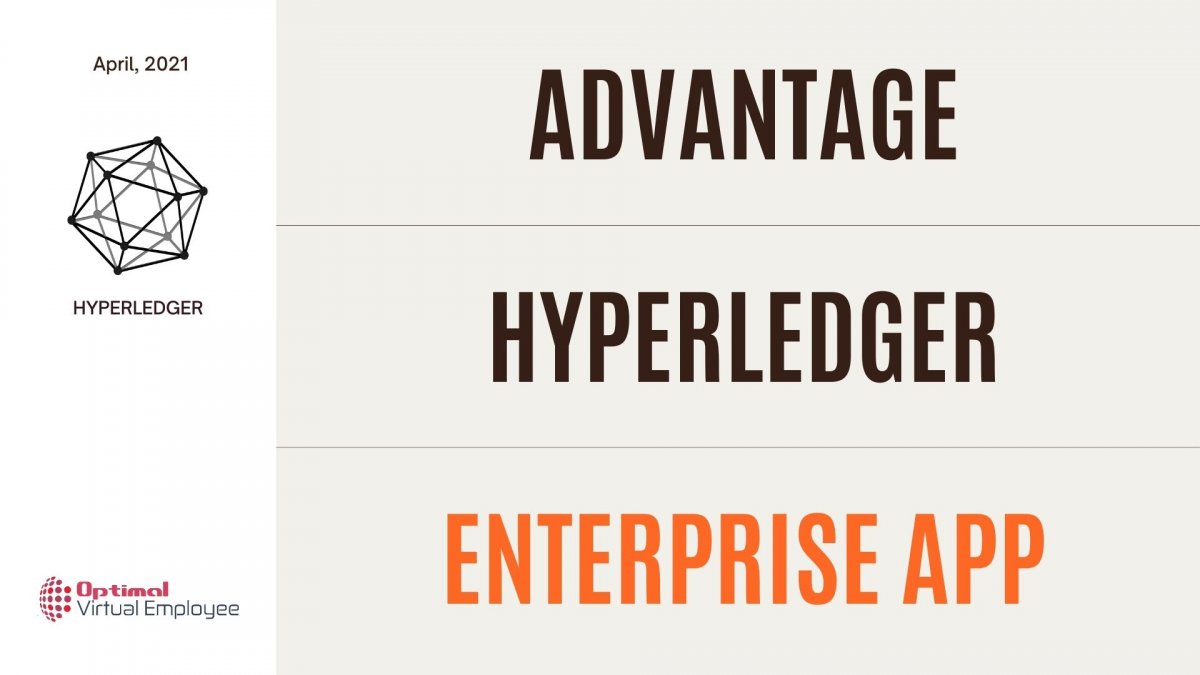In the modern-day era of e-commerce, we have seen a shift from regular old paper based currencies to cryptocurrencies like bitcoin. Blockchain engines like bitcoin and ethereum provide public domain services for the exchange of assets. However, this was the main reason for major corporate firms to withdraw from the use of Bitcoin.
These solutions overlooked the privacy concerns. With different organizations doing transactions in a smart network and the need for a decentralized internet, Hyperledger has emerged as an ideal tool for enterprise application development.
Hyperledger is an initiative of the Linux Foundation to allow organizations to construct blockchain applications according to their peculiar business demands. Businesses can hire freelance software developers to build hyperledger blockchain to boost market share, be better than the competitors, and reduce the risk factor. In this article, we look into the various merits of the Hyperledger Fabric for Enterprise App development.
-
Modular Design
Each business use case has its own unique specifications. For bitcoin the blockchain stored only a transaction log for the currency exchanged, however Hyperledger on the other hand defines assets more flexibly allowing companies to exchange all sorts of commodities freely.
The Asset in the fabric is defined as a collection of key value pairs, with state changes recorded as a transaction log. The Hyperledger fabric enables its owners to define the asset types and to specify a consensus protocol for ordering the transactions by using chaincode. This chaincode is delivered to the fabric as a smart command.
-
Security and Privacy
Hyperledger unlike its predecessors guarantees full confidentiality to its users by the provision of a permission network. The ledger has restricted access to only those members who are permitted by the Membership Service Provider(MSP). There can be a further provision of access control lists which provides further layers of security. Only those authorized can deploy chaincode to invoke an existing contract or/and deploy a new contract.
The unique feature of the PRIVATE CHANNEL in Hyperledger provides the means to create private subnets with a separate ledger to provide secure and private transmission of information between mutual beneficiaries maintaining confidentiality.
-
High Fidelity and Efficient Transactions
To ensure high speed of processing the blockchain framework has categorized two types of nodes – peer nodes and ordering nodes. Peer nodes process and verify transactions at high speed amounting to three thousand per second and the ordering nodes order and propagate transactions based on a customized consensus protocol to provide a single seamless record of transactions in chronological order.
This approach not only negates the need for a third-party intermediary and fixes the problem of incomplete transaction records between the participating firms, but it also increases efficiency and scalability.
-
Ledger
The ledger in the Fabric provides an immutable record of all the transactions in a log. There is a second component to the Ledger which is the State Database providing the current location of the asset under discussion. This provides a firm basis to track both the origin and the provenance of an asset and also fixing the problem of incomplete records. The State Database is a unique feature of Hyperledger fabric that enables high-speed computing and increases the efficiency of transactions.
-
Rich Querying Capability
All the updates issued on the ledger come with a set of asset key-value pairs. Infact Hyperledger file system comprises LevelDB, which is the best fit for query functions. Consisting of a key-value database, Hyperledger also has CouchDB, a document database that stores content in the form of JSON, to ease querying. Hyperledger’s data model is amiable with the value programming model and makes reporting and audit functions easy.
-
On-Demand Data
Blockchain data partitioning ensures data privacy. Partitioning means the physical separation of sensitive data. Among the various channels that Hyperledger supports, the data is distributed only among parties that present a need for it. Thanks to this, hyperledger fabric avoids the risk of disseminating private information to the public.
-
Intellectual Property
Hyperledger brings together vendors, developers, and users from across the globe single onto a platform. Most of them are driven by the aim of learning about blockchain and developing enterprise apps. Hyperledger utilizes the Creative Commons Attribution 4.0 International license and Apache 2.0 license of code to safeguard intellectual property to address legal issues.
In the End
Hyperledger is a permissioned distributed ledger platform. The aforementioned utilities demonstrate that Hyperledger is an emerging technology poised to radically transform the global markets due to its diverse industrial applications. It is a secure, private, and trustworthy environment for enterprises with the massive data flow.
Thanks to its interoperability frameworks, it makes enterprise workflow simple. Hyperledger divides transaction processing into three categories like distributed knowledge processing and agreement, transaction validation and commitment, and transaction ordering. It minimizes verification requirements and enhances trust, thus optimizing network scalability and performance. Unlike Bitcoin and Ethereum, hyperledger does not necessitate the need for a built-in cryptocurrency backbone for its operation and this signals that Hyperledger is targeting enterprise apps and their precise needs.









